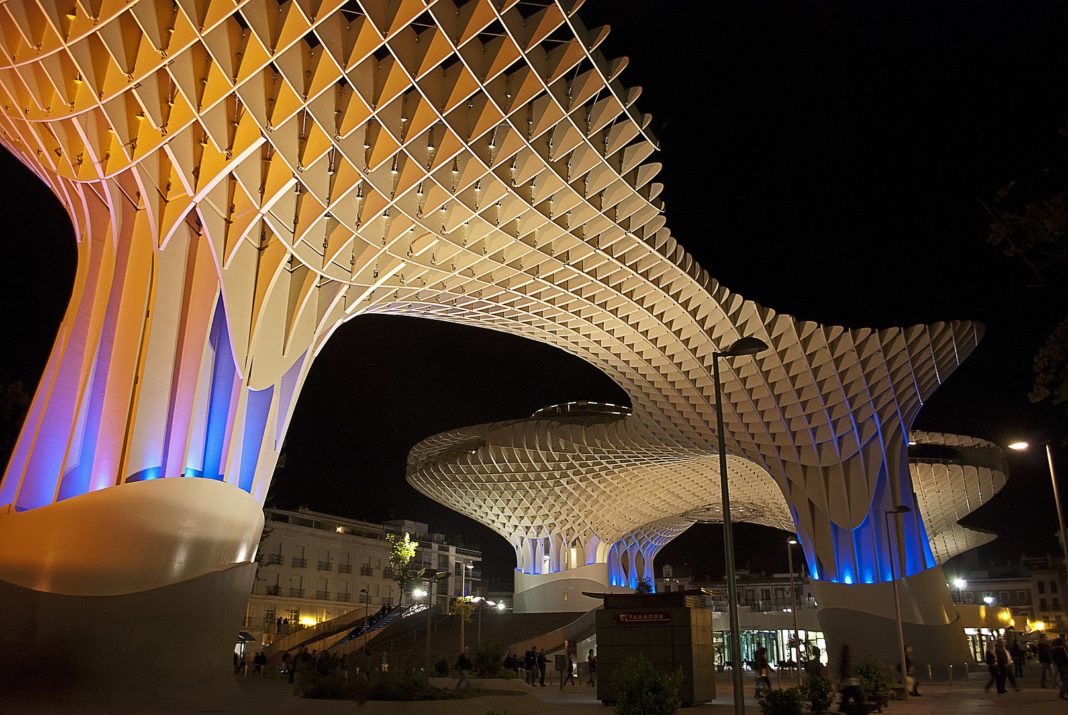Setas de Sevilla (“Mushrooms of Seville”) or Las Setas (“The Mushrooms”), initially titled Metropol Parasol, is a wooden structure located at La Encarnación square in the old quarter of Seville, Spain. It was designed by the German architect Jürgen Mayer and completed in April 2011. It has dimensions of 150 by 70 meters and an approximate height of 26 meters and claims to be the largest wooden structure in the world.
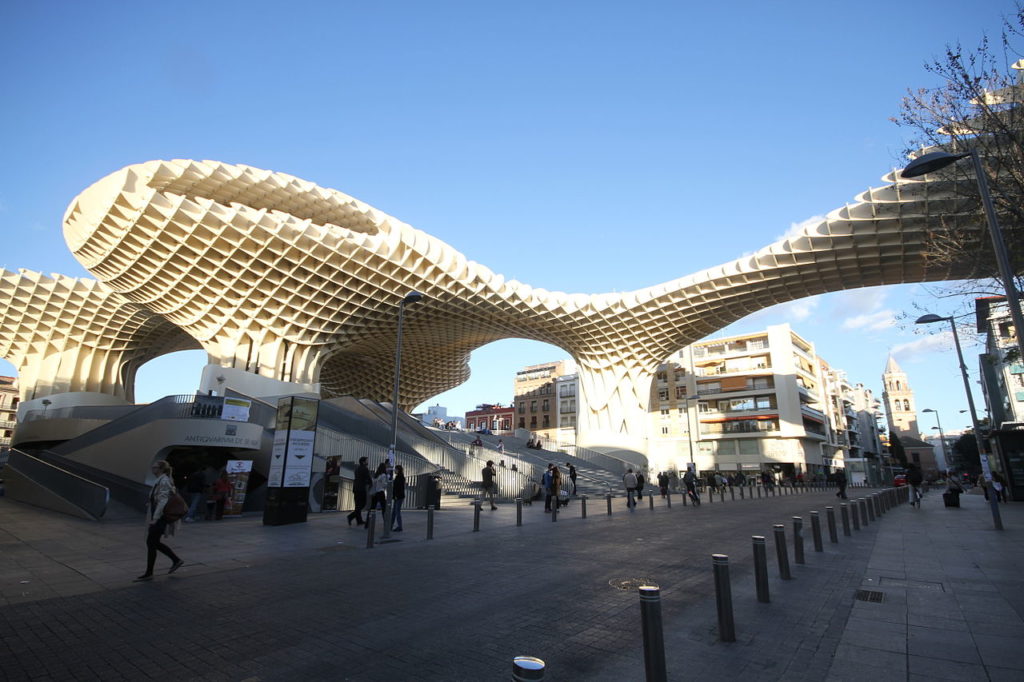
The structure consists of six parasols in the form of giant mushrooms, whose design is inspired by the vaults of the Cathedral of Seville and the ficus trees in the nearby Plaza de Cristo de Burgos. The Setas are organized into four levels. The underground level (Level 0) houses the Antiquarium, where Roman and Moorish remain discovered on site and are displayed in a museum. Level 1 (street level) is the Central Market. The roof of Level 1 is the surface of the open-air public plaza, shaded by the wooden parasols above and designed for public events. Levels 2 and 3 are the two stages of the panoramic terraces (including a restaurant), offering a view of the city center.
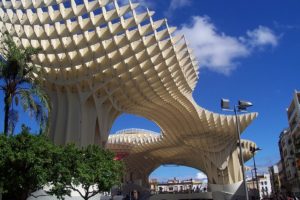
Its role as a unique urban space within the dense fabric of the medieval inner city of Seville allows for a great variety of activities such as memory, leisure, and commerce. A highly developed infrastructure helps to activate the square, making it an attractive destination for tourists and locals alike.
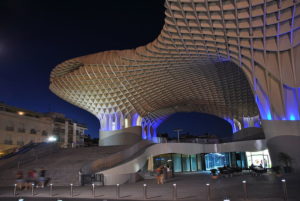
Realized as one of the largest and most innovative bonded timber constructions with a polyurethane coating, the parasols grow out of the archaeological excavation site into a contemporary landmark, defining a unique relationship between the historical and the contemporary city.
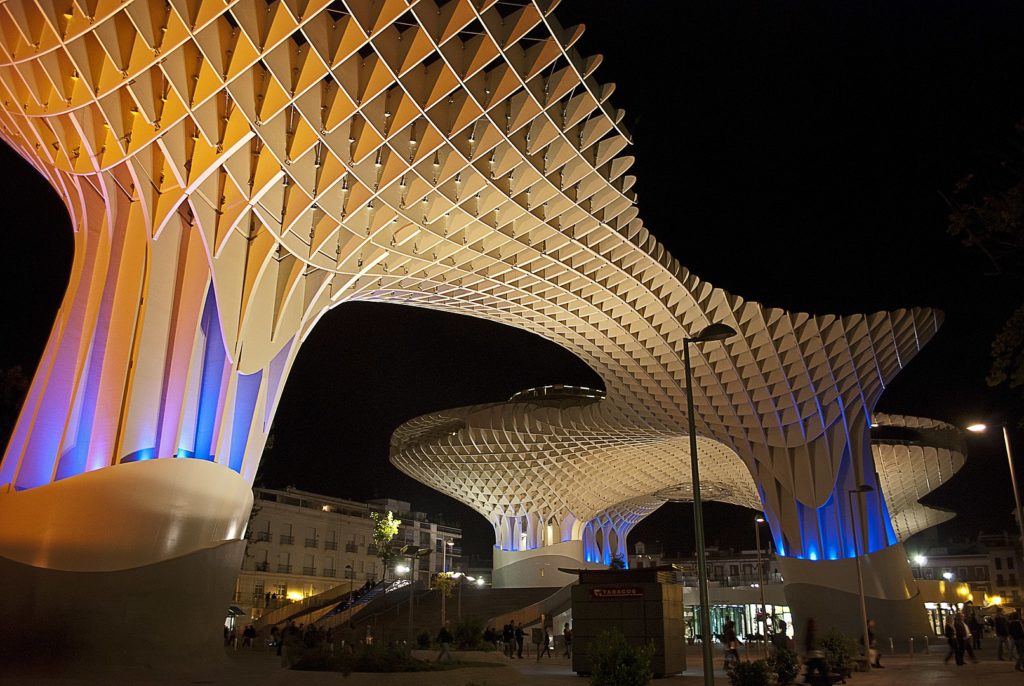
According to Wikipedia





